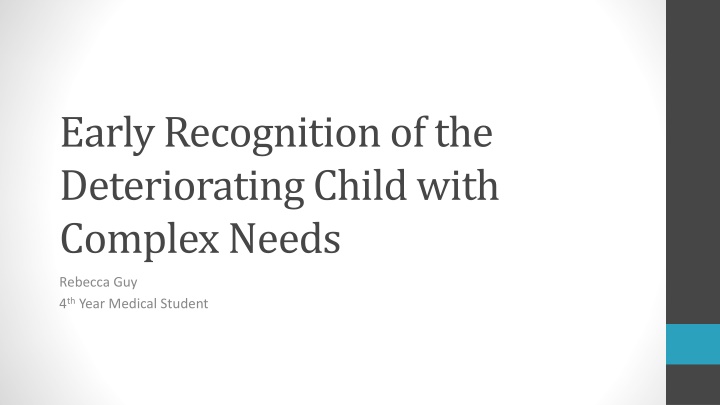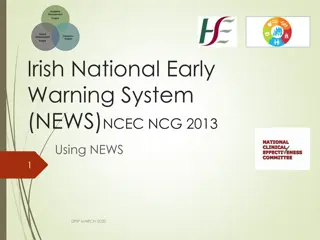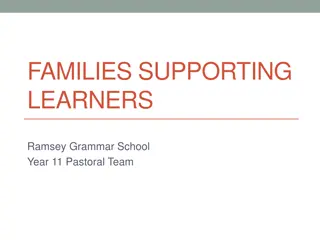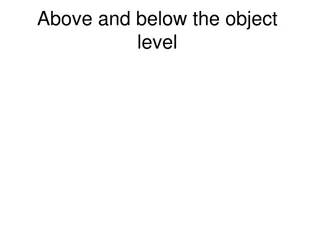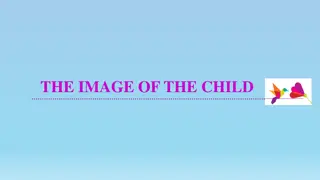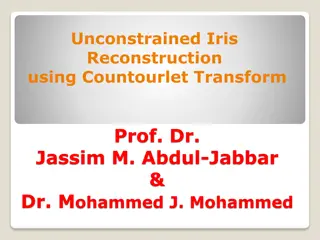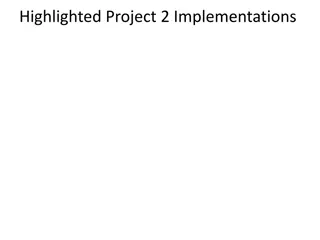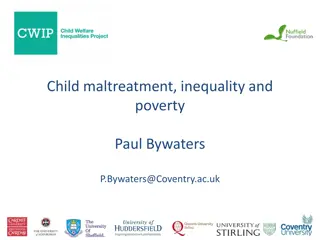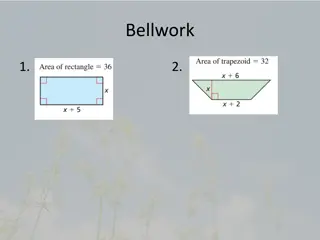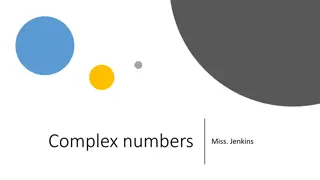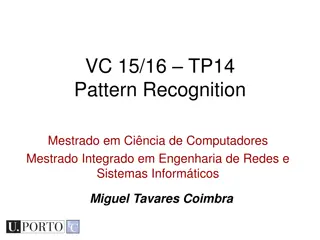Early Recognition of the Deteriorating Child with Complex Needs Study
This study explores the potential benefits of using individualized Pediatric Early Warning Score (PEWS) charts for children with complex neurological disabilities admitted with infections. By comparing standard age charts with patient-specific values, the aim is to improve specificity in recognizing deterioration and reducing high-dependency unit admissions. Results showed variations in physiological parameters and scoring between individualized and standard charts, suggesting the need for personalized approaches in monitoring such patients.
Download Presentation

Please find below an Image/Link to download the presentation.
The content on the website is provided AS IS for your information and personal use only. It may not be sold, licensed, or shared on other websites without obtaining consent from the author.If you encounter any issues during the download, it is possible that the publisher has removed the file from their server.
You are allowed to download the files provided on this website for personal or commercial use, subject to the condition that they are used lawfully. All files are the property of their respective owners.
The content on the website is provided AS IS for your information and personal use only. It may not be sold, licensed, or shared on other websites without obtaining consent from the author.
E N D
Presentation Transcript
Early Recognition of the Deteriorating Child with Complex Needs Rebecca Guy 4thYear Medical Student
Introduction Early Warning Scores are a way of recognising how unwell patients are by looking at their physiological observations. (1) There is a group of children with complex neurological disabilities regularly admitted with infections that sometimes end up in the High Dependency Unity (HDU) or Paediatric Intensive Care Unit (PICU) Their baseline physiological parameters sit outside the normal range. (2) Can be either under or over sensitive on a PEWS chart Could we reduce incidents of deterioration and admission to HDU/PICU in these patients by creating individualised PEWS charts based on their own previous observations? Very little research previously done on the subject
Aims To see if using individualised PEWS values results in increase in specificity of scoring when compared to a standard age chart in children with complex disabilities regularly admitted with infection. If our results suggest that individualised PEWS scoring would be useful in our group of patients then we aim to create patient specific individualized PEWS charts for them
Methods We had five patients in our study, all of whom have a form of complex neurological disability and who over the past year have had more than one admission to the ward/HDU with infection. Data was gathered from the PEWS charts for their admissions and for their time in outpatient respite facilities and for each patient 4 sets of observation results were obtained; 24 hours after admission to hospital, 24 hours before deterioration in hospital, 24 hours before discharge and during times in respite facilities We then calculated: o Median values for their outpatient observations and compared to the standard age range o Individual 90thand 99thpercentiles and then were able to see how these compared to the age appropriate chart o The percentage of times a score of 1 or 3 would be awarded using the individual percentiles compared to the standard age charts o How the sensitivity and specificity changed
Results Normal HR for age Median HR Normal RR for age Median RR Case 1 95-140 107 20-30 23 Case 2 60-100 96 2-16 20 Case 3 60-100 51 2-16 21 Case 4 60-100 118 2-16 28 Case 5 80-120 122 15-20 22
Case 1 120 100 80 60 40 20 0 Admission HR score 1 or more Admission HR score 3 Deterioration HR score 1 or more Deterioration HR score 3 Admission RR score 1 or more Admission RR score 3 Deterioration RR score 1 or more Deterioration RR score 3 % % % % % % % % Standard Age Chart Outpatient Centiles
Heart Rate Sensitivity Increased Increased Increased Unchanged Decreased Specificity Increased Increased Increased Unchanged Increased Case 1 Case 2 Case 3 Case 4 Case 5 Respiratory Rate Sensitivity Increased Increased Decreased Decreased at 90th percentile, Increased at 99th percentile Increased Specificity Increased Increased Increased Increased Case 1 Case 2 Case 3 Case 4 Case 5 Increased
Discussion Five out of five patients would benefit from individualised PEWS scores. Generally we found a significant difference between scoring using individualised percentiles compared to a standard age chart. Results are not false positives as they are based on actual clinical deterioration and normal values for each patient. Specificity was increased in all but 1 of the total observations. The sensitivity of both observations was more dependent on the individual patients. When sensitivity is increased the patient s deterioration is picked up more quickly and when sensitivity is decreased there are less false triggers i.e. scores are not triggered when for example a higher respiratory rate is actually normal for the patient. In some cases there was a big difference using both the 90th and 99th percentiles and in others the difference was only really significant at the 99th percentile (score of 3 awarded which prompts medical review.) As a patient group, four out five of them had higher median respiratory rates than the population and this can be explained by their neurological disability as they all have some degree of respiratory compromise. (2)
Increased or decreased scoring doesnt necessarily correlate with the median being higher, lower or within the population range The range between the 90th and 99th percentile is smaller than the population range Therefore the sensitivity being increased is less to do with the median values but more that the narrower range is being accounted for Individualised scoring systems could be useful in other paediatric patients with chronic conditions as it would be able to more accurately detect how unwell they are.
Conclusion It would be very beneficial to create individualised PEWS charts for our group of children with complex disability who are admitted regularly with infection. We have found that using individualised 90th and 99th percentiles for scoring gives a more accurate representation of how unwell they are compared to a standard age chart as the specificity is increased. Generally the biggest difference is at the 99th percentile which is when a score of three is awarded and medical review is triggered. Having individualised trigger points for parents to carry with them means that if the child becomes unwell and is admitted to hospital the parents feel that the child is able to be more accurately and objectively assessed and the appropriate amount of review (nursing or medical) can therefore be more accurately determined.
References (1) Roland D. Paediatric early warning scores: Holy Grail and Achilles heel. Arch Dis Child - Educ Pract Ed. 2012 Jul 3;edpract 2011 300976. (2) Van Gestel JP, Robroch AH, Bollen CW, Van Der Ent CK, Van Vught AJ. Mechanical ventilation for respiratory failure in children with severe neurological impairment: is it futile medical treatment? Dev Med Child Neurol. 2010 May 1;52(5):483 8.
